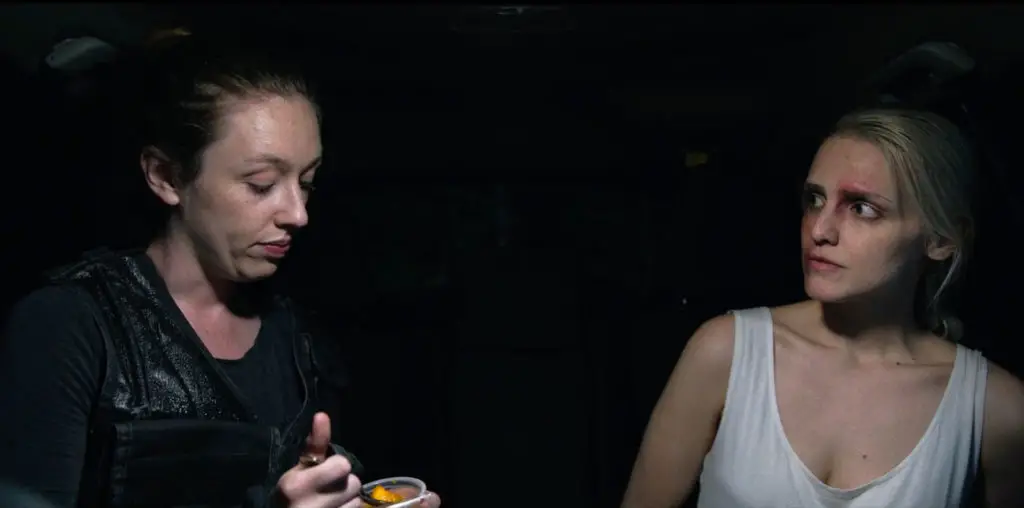
BOOTLEG FILES 338: “The Woman in Green” (1945 Sherlock Holmes feature starring Basil Rathbone and Nigel Bruce).
LAST SEEN: Available on various online video sites.
AMERICAN HOME VIDEO: On public domain labels.
REASON FOR BOOTLEG STATUS: A lapsed copyright.
CHANCES OF SEEING A COMMERCIAL DVD RELEASE: Although crummy dupes still persist, a classy restored version is available on DVD.
In 1939, 20th Century Fox produced a film adaptation of “The Hound of the Baskervilles.” Basil Rathbone – a British actor who was best known for playing villains in Hollywood epics – was cast as the master detective Sherlock Holmes, and Nigel Bruce – another British actor who was not particularly famous for any significant role – was brought in as Dr. Watson. The film was a surprise hit and the studio quickly reteamed the actors for a sequel called “The Adventures of Sherlock Holmes.” While that film was also a success, the studio decided not to pursue any further films based on the Arthur Conan Doyle stories.
In 1942, Universal Pictures decided to pick up where 20th Century Fox left off. Rathbone and Bruce were brought back, albeit in a somewhat different form: the Victorian settings of the 20th Century Fox films were replaced with a contemporary environment. Part of this was economical – Universal planned to create a B-level series of Sherlock Holmes mysteries and it was cheaper to use contemporary costumes and set designs. Part of this was also marketing-inspired – having Holmes running about in the 1940s would enable him to fight the Nazis, thus creating a new movie action hero for wartime audiences.
The original Conan Doyle stories offered a vague inspiration for some of the films, while others were created with nary a nodding glance at the original source materials. Some film historians have complained about these films, stating that the Dr. Watson character was played too much as a buffoon and that an unhealthy dose of campy humor was injected into several of the productions. However, audiences loved the series and Universal produced 12 Holmes-related films between 1942 and 1946.
Several of the films produced at Universal later fell into the public domain, and they have been subjected to endless duping by cheapo labels. A personal favorite of this group is the 1945 offering “The Woman in Green,” which stands out thanks to a wonderfully daffy plot, unexpectedly stylish direction and the strong supporting presence of two underrated co-stars.
“The Woman in Green” opens in London amidst a strange crime wave: young women are found murdered, with one finger cut from their hands. Scotland Yard is baffled, so Inspector Gregson decides that outside help is needed. Naturally, he calls on Sherlock Holmes.
(It should be noted that the Universal films usually featured Dennis Hoey as the comically obtuse Inspector Lestrade, who functioned as Holmes’ law enforcement rival. It is not clear why the studio replaced Hoey’s comic bumbler in favor of a serious Inspector Gregson, played by Matthew Boulton.)
As luck would have it, Gregson takes Holmes to a London restaurant, where the ace detective spots the aristocratic Sir George Fenwick in the company of Lydia Marlowe, a young blonde that is clearly not his daughter. Sir George and Lydia retreat to her unusually spacious apartment, but in the morning Sir George awakes in a cheap bed-and-breakfast with something strange in his pocket. Sir George is later murdered, and it is discovered that he was being blackmailed for possessing a woman’s finger.
Holmes realizes that something purely diabolical is happening, and he immediately suspects that the dreaded Professor Moriarity is behind the scheme. Dr. Watson disagrees, reminding Holmes of a news report that Moriarity was “hanged in Montevideo over a year ago.” (This may be the first and only reference to the Uruguayan capital in a film produced during Hollywood’s Golden Age!)
What happens next? It can be said that Holmes’ consideration of Moriarity’s role in the affair is spot-on – although it is not clear how Moriarity survived a fatal fall in “Sherlock Holmes and the Secret Weapon” two years earlier. But beyond that, there are no spoilers to be found here. It would be a shame to give away too much of the plot – there are plenty of very, very weird twists and turns, and much of the joy in “The Woman in Green” is trying to make sense of the sinister obstacles that Holmes faces.
If Holmes’ purists cringe at the film’s highly unusual substance, they would hopefully appreciate its rich visual style. Roy William Neill was the producer-director for this and the other films in the Universal series, but “The Woman in Green” offers an uncommonly imaginative film noir style. Sophisticated shadow play, subtle tracking shots and a wonderfully strong ensemble help to raise this B-level effort far above its low-budget roots. Neill has never received any degree of critical celebration for his work, which is a shame because the Holmes films in general – and “The Woman in Green” in particular – represent an extraordinary effort.
Also key to the film’s success are the performances of Henry Daniell’s Moriarity and Hillary Brooke’s wicked Lydia Marlowe. Daniell was a dour-faced English actor who specialized in playing sophisticated villains. He already appeared in small roles in two earlier Universal Holmes films, but this was his largest role in the series and his only appearance as the dreaded Moriarity. Whereas most screen villains create a theatrical sense of physical and vocal danger, Daniell (under Neill’s subtle direction) created memorable menace that terrorized with his intellectual prowess. Unlike the flamboyance that Lionel Atwill and George Zucco brought to earlier Holmes films, Daniell truly embodied the banality of evil – and the deceptive calm of his presence made his presence all the more chilling.
Then there is Hillary Brooke. The gorgeous blonde actress appeared in smaller sympathetic parts in two earlier Holmes films, but in “The Woman in Green” she gets to explore miscreant extremes as the female lead. Her performance was a masterwork of cool sex appeal hiding a seething evil, and the result was one of the most wonderfully original villains of this series. Brooke never found a niche in A-level films, but she did achieve an immortality of sorts through her work on television’s “Abbott and Costello Show,” where she played the glamorous neighborhood who inevitably wound up in the middle of the slapstick duo’s mayhem.
In an interview published later in her life with British newspaper The Independent, Brooke spoke very highly of this cinematic experience. “They were so wonderful to me,” she said. “Basil Rathbone was a nice man. He looked very haughty, very elegant, but he was a very real person. And Willie (Nigel Bruce) was always joking. During the string of Holmes pictures, we really had a wonderful time together. And our director, Roy William Neill, was so easy to work with – it was such a happy company. The picture business today has changed a great deal. It’s not the family it used to be.”
As mentioned earlier, “The Woman in Green” has been the subject of endless duping due to its public domain status. There was even a colorized version, which makes a complete mess of Neill’s film noir style. Fortunately, the UCLA Film and Television Archive beautifully restored the film, and this version can be found on an MPI Home Video collection featuring all 14 of the Rathbone-Bruce films in a single DVD collection. By all means, seek out that DVD of “The Woman in Green” – it is the best-looking version of a genuinely entertaining old-time mystery.
IMPORTANT NOTICE: The unauthorized duplication and distribution of copyright-protected material, either for crass commercial purposes or profit-free s***s and giggles, is not something that the entertainment industry appreciates. On occasion, law enforcement personnel boost their arrest quotas by collaring cheery cinephiles engaged in such activities. So if you are going to copy and distribute bootleg videos and DVDs, a word to the wise: don’t get caught. Oddly, the purchase and ownership of bootleg videos is perfectly legal. Go figure!


Mr. Hall, here’s an additional bit of trivia; on some radio show (I forget whose) Rathbone and Bruce appeared. They did a sketch where they reversed their parts: Bruce played Holmes, Rathbone played Watson. Reportedly it worked really well. (But then, all serious actors would love to work in comedy, and vice versa.)
@Rusty: I never saw the Silva film, though I’ve heard of it — it used to run on late night TV in the pre-cable days.
@Thomas: The Rathbone-Bruce series was wonderfully entertaining, and the two films you cited are great wartime propaganda.
Back when I worked in TV…back when local stations could buy movie libraries…my station had a package of the Rathbone/Bruce Holmes movies. The time-travel Holmes stories were amazing. Sherlock Holmes and the Voice of Terror, in which Holmes uses an oscilloscope to locate a Nazi propagandist who announces sabotage of Britain’s war effort. And Sherlock Holmes in Washington had Holmes and Watson driving around DC in a convertible, talking about British/American unity.
The package also included the Peter Lorre Mr. Moto movies It also included a strange number, The Return of Mr. Moto, a British production with Henry Silva playing a young, Caucasian-looking guy. Where Lorre’s Moto was a humble, sneaky infiltrator, usually in disguises and usually quiet unless confronting the villains, Silva’s Moto was a karate-chopping agent, never identified with any government, fighting oil well saboteurs. The weirdest aspect of the film was the theme song, very reminiscent of the I Spy theme.
sounds like you found another bootleg to add to the files, mr. hall! i’d love to find out more about this henry silva vehicle, ‘return of mr. moto’!
No, it doesn’t. Very funny catch!
Ha, normally I would relish at a reference to my hometown of Montevideo in anything tangentially related to Sherlock Holmes, but the death penalty was abolished in Uruguay in 1907! The film surely does not incorporate that fact into a character’s deduction that Moriarty’s death must have been a hoax, right?